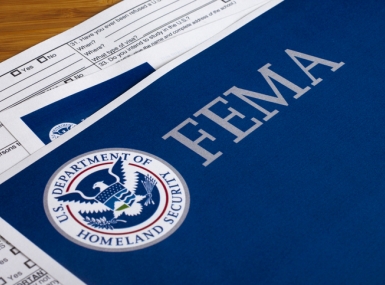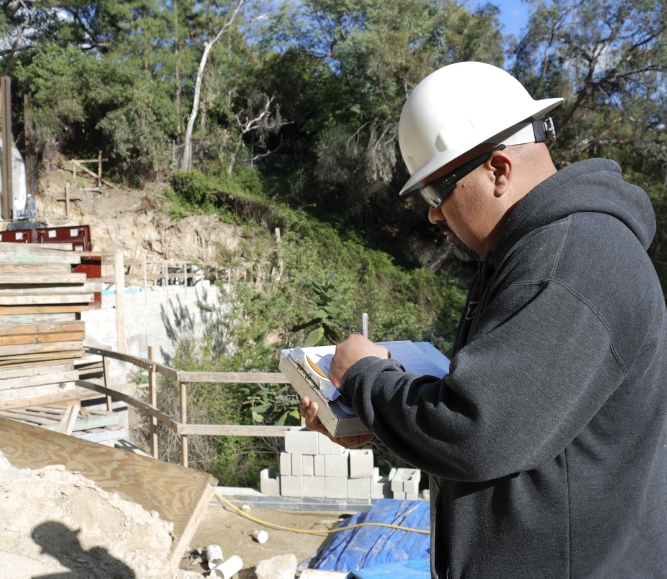Counties scramble after FEMA scraps disaster mitigation funds

Following the cancellation of a Federal Emergency Management Agency (FEMA) grant program that was helping counties build disaster mitigation infrastructure, local governments are working to find alternative funding sources and implement planned projects on a smaller scale.
Earlier this month, FEMA announced it is no longer allocating $750 million through its Building Resilient Infrastructure and Communities (BRIC) grant program this year, and will stop funding previously approved projects. In many counties, including Napa County, Calif., BRIC-funded projects were already underway.
Napa County had already awarded $27 million in contracts for wildfire prevention work, and is in the process of recalling them, according to Holly Dawson, the county’s chief communications officer. Wildfire protection projects underway included defensible space and ignition-resistant construction, environmental permitting and public education and outreach — a hazardous fuels reduction initiative was also in the planning process, according to Dawson.
According to FEMA, any grant funds that haven’t been distributed will be returned to the Disaster Relief Fund or U.S. Treasury. Napa County had submitted roughly $250,000 in reimbursable work before the BRIC program was canceled — it’s unclear if the county will be reimbursed, according to Dawson.
“For Napa County, the federal investment was central to our mitigation strategy,” Dawson said. “And it’s not political — it supported real, measurable work that was already underway and protects lives, homes and infrastructure.”
The BRIC grant program was designed to support proactive planning and infrastructure upgrades ahead of disasters. There’s a $6 return-on-investment for every $1 of public funding spent on up-front mitigation, according to a 2019 National Institute of Building Sciences report. The cancellation is part of a broader evaluation of FEMA grant programs and priorities under an Executive Order signed by President Trump last month.
FEMA’s press release announcing the cancellation of the program, noted, “The BRIC program was yet another example of a wasteful and ineffective FEMA program. It was more concerned with political agendas than helping Americans affected by natural disasters. Under Secretary Noem’s leadership, we are committed to ensuring that Americans in crisis can get the help and resources they need.”
Napa County’s fire administration team is working with the California Governor’s Office of Emergency Services to identify potential alternative funding opportunities to see if some of the work it’s done can be “reshuffled” into shorter-term fire resiliency projects with less finances attached, Dawson said.
The county’s $35 million BRIC grant was set to be matched by $15 million in county funding. Napa County will no longer dedicate the 30% match in funds toward the projects, which have been halted, according to Dawson.
“A lot of this preliminary work, some of it is going to be useful and helpful, and we’ll use it for future efforts,” Dawson said. “But, without the end product — like doing the outreach to get everybody on board to do the right of entries, if we’re never going to need the right of entries, because we’re not going to do the home hardening project — it doesn’t make sense.
“If you’re making a cake and you’ve got the flour and the butter and I’ve got the eggs, having just the eggs doesn’t work because it’s missing other ingredients. That $15 million only made sense if it was leveraged with that $35 million to do the actual project.”
There have been 26 major wildfires in Napa County in the past decade. Over 60% of the county’s land has burned since 2017 and more than one-third of the county’s population lives in designated wildfire hazard zones.
“It’s real and it’s a constant threat, and we were making real progress,” Dawson said. “This was really exciting, because we’ve been sharing this with the community, and the response has been phenomenal that we might get ourselves to a position where we’re really in shape to be able to address that next fire, which isn’t an ‘if’ — it’s going to happen.
“And this just takes us 20 steps backwards.”
Jefferson County, Kentucky was dealing with “historic” flooding when FEMA announced that the grant program had been cut. With the help of BRIC funding, the county was set to upgrade its 70-year-old flood infrastructure, through improvements to the West Woods Creek Basin and Western Flood Pump Station, which help protect more than 200,000 people, nearly 80,000 structure and billions of dollars-worth of property from flooding, according to Wes Sydnor, Louisville Metro Sewer District’s chief of government and public affairs.
Now that the federal funding is no longer available, the city-county government will work to set aside funding to address its most critical infrastructure needs in its next fiscal year budget and its five-year budget, according to Sydnor.
“We just went through this historic flood event — we had every station on, and yet we had pumps and electrical equipment and different things that failed, and it put a lot of stress on the system and our facilities,” Sydnor said. “… So, we saw with the rains and the flooding in April how critical these assets are, and how important this work and these facilities are to our public health and safety, our economy and our environment, here in Louisville.”
The city-county is now working to share stories of how essential the flooding infrastructure is with its representatives in Congress and looking at ways to “get creative” with identifying state and federal funding pathways for different projects, so that that financial burden can be alleviated from Jefferson County’s ratepayers, according to Sydnor.
“This news came when we were in the middle of this event, and we’re talking about projects that would support the work we’re doing to keep people safe in that system,” Sydnor said. “So, the first thing that we’re going to do is make it understood that the projects we were pursuing here and using this funding for are very needed — it’s critical infrastructure.”
Related News

States file lawsuit challenging FEMA’s new rules on emergency management grants
On November 4, a coalition of 12 states filed a lawsuit against the U.S. Department of Homeland Security (DHS) and the Federal Emergency Management Agency (FEMA), alleging that recent changes to key emergency management grants are unlawful and could disrupt state and local preparedness efforts.

County Countdown – Nov. 4, 2025
Every other week, NACo's County Countdown reviews top federal policy advocacy items with an eye towards counties and the intergovernmental partnership.
FEMA bill staffers offer insights into reform effort
NACo Intergovernmental Disaster Reform Task Force heard from staffers who helped shape a bill that would make dramatic changes to the Federal Emergency Management Agency.
County News
FEMA’s BRIC program allocates $137 million for building codes
Counties can use this funding to advance hazard-resistant construction while increasing their competitiveness for future infrastructure grants.

